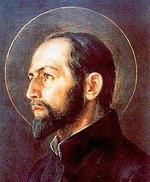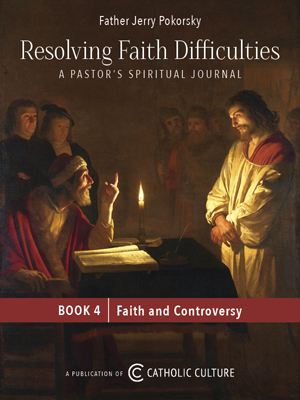The Catholics of Viet Nam Pay Homage to Our Lady of La Vang
by Unknown
Towards the end of the 18th century, what is now Viet Nam was divided into two kingdoms: the North, with its capital Ha Noi, ruled by the Trinh family, and the South, with its capital in Hue, governed by the Nguyen family. The southern rulers, in their attempts to conquer the North, sought the help of France. But a group of intellectuals, known as Van Than, was opposed to the French intervention and succeeded in having Quang Trung proclaimed king of the South. He conquered the North but died prematurely, leaving the throne to his son Canh Thinh, who was only ten.
In August 1798, the young king's advisers decreed the persecution of Christians, whom the Van Than group held responsible for the French presence on Vietnamese soil. Together with their families, the Christians sought refuge in the La Vang forest, about 60 kilometres from their homes. To find courage in their anxiety, they met everyday under a large tree and recited the rosary in honour of the Virgin Mary. One day, Our Lady surrounded by two angels and bearing the Child Jesus in her arms appeared to them for the first time, assuring them that their prayers would be heard and promising them her protection and relief from their afflictions. Other apparitions followed.
Unfortunately, there is no written documentation of these apparitions: such documents were perhaps kept in the Hue church archives, which were destroyed during two local wars: in 1833, under King Minh Mang, and in 1861 in the reign of King Tuduc.
In 1886, the persecution ended. The original chapel, made of straw, soon became too small. From 1885, several chapels were built one after another: the last, with its three small huts, was blessed in 1928 by Bishop Eugene Maria Giuseppe Allys (Ly, in Vietnamese), who was then Vicar Apostolic of Hue.
During the period 1886-1928, the locality of La Vang was dependent on the parish of Co-Vuu, in the Province of Quang Tri. In 1928, in order to respond to the needs of the growing number of pilgrims, Bishop Allys erected La Vang as an independent parish.
On 13 April 1961, the Bishops of South Viet Nam (then divided from North Viet Nam by the 18th parallel), assembled in Hue, made a vow to the Immaculate Heart of Mary to consecrate a temple to the Blessed Virgin when circumstances permitted, asking Our Lady for freedom for the Church and peace for both parts of Viet Nam. In their joint Letter of 8 August of the same year, La Vang was recognized as a national Marian Centre. On the 22nd of the same month, its church was raised to the dignity of a Minor Basilica by Pope John XXIII.
From 1961 the shrine was enlarged and embellished: Holy Rosary Square, 30 x 480 metres, with 15 statues representing the mysteries of the Rosary; two small lakes in six hectares of land; an altar made of precious stones from Non Nuoc, in the Province of Da Nang; a statue of the Blessed Virgin; retreat houses, completed in 1963; the House of the Pilgrim, a fountain, etc. But all the various buildings of La Vang were totally destroyed in 1972, during the war between the North and the South.
After the country's reunification (30 April 1975), all the Bishops of Viet Nam, gathered in Ha Noi on 1 May 1980, solemnly renewed the recognition of La Vang as a national Marian centre, singing the Salve Regina on their knees and in unison with great faith and devotion.
As from 1901 there has been a succession of national pilgrimages, initially every three years. The last of these, the 24th, took place from 13 to 15 August 1996 with a great participation of Catholics. Many pilgrims came from neighbouring countries.
In recent times, the La Vang Shrine has had close relations with the Holy See. As was mentioned above, John XXIII, after reordering the ecclesiastical circumscriptions of Viet Nam and creating an ecclesiastical hierarchy (24 November 1960), made another gift to the country by granting the title of Minor Basilica (22 August 1961) to the national shrine of La Vang. John Paul II, for his part, has shown many signs of affection for Our Lady of La Vang:
— in the Angelus of Sunday, 19 June 1988, in the list of the most significant Marian shrines he included La Vang, recalling at the same time the 117 Martyrs of Viet Nam who were canonized that same morning, and wishing that the shrine become a symbol of the Church's new vitality and of national reconciliation, without religious distinction;
— in the General Audience of Wednesday, 25 November 1992, the presence of Archbishop Etienne Nguyen Nhu The, the current Archbishop of Hue, gave the Holy Father the opportunity of referring to the La Vang Shrine and emphasizing the Vietnamese Catholics' filial attachment to Christ and to his representative on earth;
— during the World Youth Day in Denver, (15 August 1993), His Holiness spent one hour with the Vietnamese who were present and entrusted the whole Vietnamese Catholic community to the Blessed Virgin's protection, with the wish that the celebrations for the bicentenary of La Vang might help to reinforce unity and mutual understanding between the Catholics and their fellow countrymen;
— in the General Audience of Wednesday, 26 October 1994, the Holy Father asked the priests and religious gathered in Rome to study the pastoral needs of the Vietnamese diaspora, to deepen their faith and to cherish the teaching of the Church with a view to preparing the celebration of the bicentenary of La Vang;
— on 14 December 1996, on the occasion of the ad limina visit of the Vietnamese Bishops, John Paul II again entrusted the country to the protection of the Blessed Virgin, with reference to the spiritual preparation for the forthcoming commemorative celebration of the La Vang apparitions.
Clearly, the Holy See's gestures of affection and participation have increased in view of the approaching celebrations:
— the Apostolic Penitentiary has granted the possibility of earning a plenary indulgence to pilgrims who visit La Vang between 1 January 1998 and 15 August 1999, in other words, during the whole of the Marian Year proclaimed by the local Episcopate;
— in a letter to Archbishop Etienne Nguyen Nhu The of Hue, the Cardinal Secretary of State sent the Apostolic Blessing to the Archdiocese which will prepare for the feast of the 15th of August with a solemn triduum;
— lastly, as long ago as 16 December 1997, His Holiness sent a spiritual Message to Cardinal Paul Joseph Pham Dinh Tung, Archbishop of Ha Noi, president of the Episcopal Conference, and appointed him as his Special Envoy for the celebrations.
© L'Osservatore Romano, Editorial and Management Offices, Via del Pellegrino, 00120, Vatican City, Europe, Telephone 39/6/698.99.390.
This item 481 digitally provided courtesy of CatholicCulture.org






